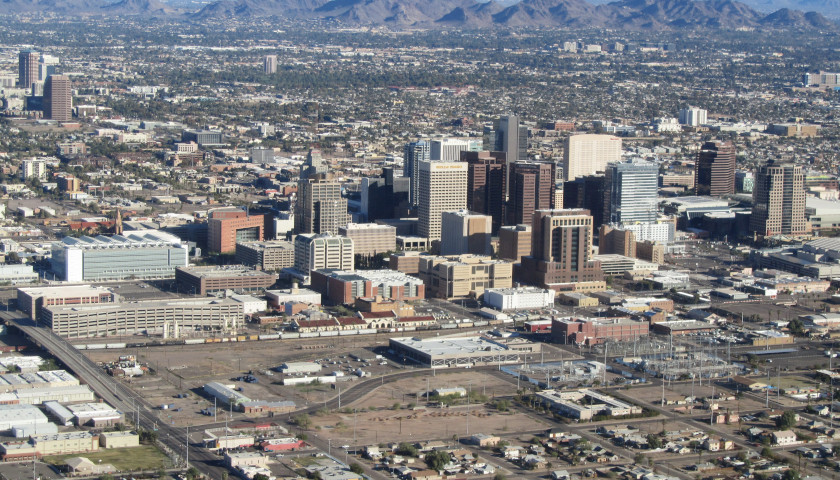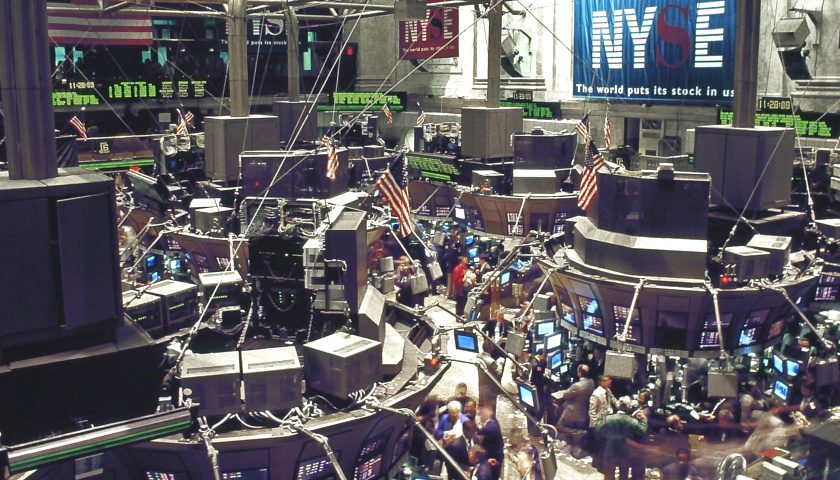Inflation is soaring under the Biden administration, and it’s even worse in Phoenix. The Bureau of Labor Statistics reported that inflation in Metro Phoenix jumped 10.9 percent from February 2021 through February 2022, significantly more than the national average increase of 8.5 percent and higher than any other major metro area. This is one of the highest levels reported for Phoenix, the Common Sense Institute found.
Timothy Jeffries, owner and chairman of ChemResearch Company, Inc. in Arizona, and the former director of the Arizona Department of Economic Security (DES), told The Arizona Sun Times, “Low income and middle class Americans are the ones who pay the highest price when inflation skyrockets. The economic and personal tragedies they suffer are that much more heartbreaking because this rampant inflation was avoidable. The fault for this clearly lays at the feet of the economically inept Biden Administration. There is nothing ‘transitory’ about the current administration’s incompetence.”
The 8.5 percent inflation rate is the highest in the U.S. in 41 years. In 2020, the last year of Donald Trump’s presidency, it was at 1.5 percent. It began spiking as soon as Joe Biden entered office. The main goods driving the spike nationally are food, gas, and housing.
Spikes in housing and gasoline costs are driving much of the increase locally. The cost of housing jumped 12.4 percent, 2.6 times the increase across the U.S., and gas spiked 43.8 percent. The average cost of a gallon of gas in Phoenix a year ago was $3.07; now it’s $4.59. That is significantly higher than the national average of $4.08. Arizona is dependent on high-cost California refineries, and pollution-fighting additives pile onto the cost. The average Phoenix household is now paying $597 more per year for gas. Danny Court, a senior economist with Elliott D. Pollack & Company in Scottsdale, said the increase in gas prices will have the biggest effect of all consumer price hikes on people.
Housing has spiked due to the popularity of people moving to Phoenix. More people moved to Maricopa County last year than any other county in the U.S. “All these people want to move here; it creates this immediate excess demand for housing,” said Arizona State University economist Dennis Hoffman. “So housing prices skyrocket quickly – that translates to rent.”
Other alarming jumps in the Phoenix area include used vehicles with a 38.5 percent increase; meat, eggs and fish increased 16.2 percent; fruit and vegetables increased 13 percent; and electricity jumped 12.9 percent. Also, Recreation increased 12.5 percent and clothing increased 15.5 percent.
It wasn’t all bad news. Restaurant meals only jumped 5.9 percent and alcoholic beverages rose 1.4 percent. In total, Phoenix households are paying $4,462 more than a year ago on food, housing, transportation, medical care, and other goods and services.
According to Lee McPheters, a research professor of economics in Arizona State University’s W.P. Carey School of Business, there are numerous reasons for the inflation, some specific to Arizona and not necessarily other parts of the country. One is Arizona’s dramatic wage growth, which has reached double digits in recent years. Arizona’s economy is doing so well that the Back to Normal Index, tracking how well states are returning to pre-COVID-19 economies, ranks the state 7th overall.
Other typical reasons for the inflation include supply chain disruptions and frontline workers getting sick, causing temporary labor shortages. According to McPheters, COVID-19 was a significant cause of inflation. The Federal Reserve kept interest rates low to combat the disruptions from COVID-19.
Some corporations that provide consumer goods are dealing with it by subtly shrinking the size of their products. The Consumer Federation of America tracked this “shrinkflation,” identifying certain items. “Kimberly-Clark’s Cottonelle Ultra Clean mega rolls of toilet paper have just been reduced from 340 sheets to 312; Keebler’s Chips Deluxe with M&Ms packages that used to be 11.3 ounces are now only 9.75 ounces, and Gatorade’s 32-ounce bottles just shrank to only 28 ounces.”
The Common Sense Institute predicts that consumer prices will continue to rise over the next three to six months. Jim Rounds, an economist in Phoenix, predicts a recession is coming due to the Federal Reserve taking drastic action with interest rates to combat inflation.
– – –
Rachel Alexander is a reporter at the Arizona Sun Times and The Star News Network. Follow Rachel on Twitter. Email tips to [email protected].
Photo “Phoenix Skyline” by Melikamp. CC BY-SA 3.0.





